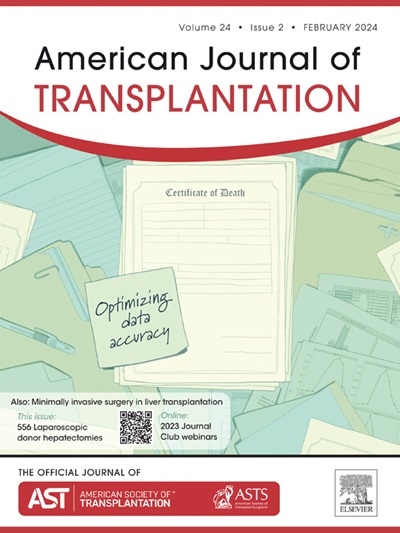肾移植后监测成像方式的进展:以对比增强超声为重点。
IF 8.2
2区 医学
Q1 SURGERY
引用次数: 0
摘要
早期和准确的发现移植后并发症是保持移植物功能和优化长期预后的关键。虽然常规超声广泛应用于移植监测,但其在评估微血管灌注和早期并发症方面的局限性促使人们对对比增强超声(造影增强超声)越来越感兴趣。超声造影提供实时、无肾毒性的微血管灌注成像,非常适合肾移植患者。我们对19项评估超声造影在肾移植监测中的应用的研究进行了系统回顾,重点关注超声造影的诊断准确性、与常规超声造影的比较以及超声造影在检测血管并发症、排斥反应和灌注异常方面的作用。超声造影诊断移植肾动脉狭窄、移植肾动静脉血栓形成等血管并发症的灵敏度高达90%,特异性高达95%。超声造影在早期发现急性肾小管坏死和排斥反应方面也很有用。然而,不同研究的超声造影参数存在显著差异,这主要是由于成像软件和方法的差异,因此需要标准化。尽管有潜力,但超声造影参数缺乏标准化的参考值仍然是临床广泛采用的障碍。需要进一步的研究来建立这些基准,并优化超声造影与常规移植监测的结合。本文章由计算机程序翻译,如有差异,请以英文原文为准。
Advancements in Imaging Modalities for Post-Kidney Transplant Monitoring: A Focus on Contrast-Enhanced Ultrasound.
Early and accurate detection of post-transplant complications is critical for preserving graft function and optimizing long-term outcomes. While conventional ultrasound is widely used in transplant monitoring, its limitations in assessing microvascular perfusion and early complications have prompted growing interest in Contrast-Enhanced Ultrasound (CEUS). CEUS provides real-time, non-nephrotoxic imaging of microvascular perfusion, making it well-suited for kidney transplant patients. We conducted a systematic review of 19 studies evaluating the use of CEUS in kidney transplant monitoring, focusing on its diagnostic accuracy, comparison with conventional US, and its role in detecting vascular complications, rejection, and perfusion abnormalities. CEUS demonstrated high diagnostic performance, with sensitivity up to 90% and specificity up to 95% for detecting vascular complications, such as transplant renal artery stenosis and transplant renal artery or vein thrombosis. CEUS also showed utility in the early detection of acute tubular necrosis and rejection. However, significant variability was noted in CEUS parameters across studies, largely due to differences in imaging software and methodology, highlighting the need for standardization. Despite its potential, the absence of standardized reference values for CEUS parameters remains a barrier to widespread clinical adoption. Further research is needed to establish these benchmarks and optimize CEUS integration into routine transplant surveillance.
求助全文
通过发布文献求助,成功后即可免费获取论文全文。
去求助
来源期刊
CiteScore
18.70
自引率
4.50%
发文量
346
审稿时长
26 days
期刊介绍:
The American Journal of Transplantation is a leading journal in the field of transplantation. It serves as a forum for debate and reassessment, an agent of change, and a major platform for promoting understanding, improving results, and advancing science. Published monthly, it provides an essential resource for researchers and clinicians worldwide.
The journal publishes original articles, case reports, invited reviews, letters to the editor, critical reviews, news features, consensus documents, and guidelines over 12 issues a year. It covers all major subject areas in transplantation, including thoracic (heart, lung), abdominal (kidney, liver, pancreas, islets), tissue and stem cell transplantation, organ and tissue donation and preservation, tissue injury, repair, inflammation, and aging, histocompatibility, drugs and pharmacology, graft survival, and prevention of graft dysfunction and failure. It also explores ethical and social issues in the field.

 求助内容:
求助内容: 应助结果提醒方式:
应助结果提醒方式:


